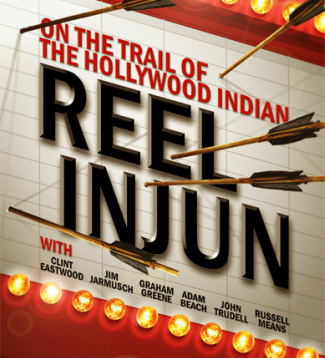 Tags: discourse/language, inequality, knowledge, media, race/ethnicity, social mvmts/social change/resistance, genocide, media literacy, racism, representation, stereotypes, 61+ mins Year: 2009 Length: 88:00 Access: Netflix; YouTube (trailer; clip 1; clip 2; clip 3) Summary: Reel Injun explores the role Hollywood cinema has played in shaping the image of First Nations People. Starting with the silent film era, director Neil Diamond argues that "the Indian" first appeared in cinema as noble and dignified, but by the 1930s, classic westerns like, They Died with their Boots on, catalyzed the emergence of negative stereotypes. The Indian was newly imagined as treacherous, and Hollywood narratives began featuring white settler protagonists in their stagecoaches fending off attacks from the Indian hordes. Just as Indian characters in film became increasingly based on this one dimensional stereotype, native people were also losing the ability to play Indian roles. Instead, productions cast white actors, like Burt Lancaster, Charles Bronson, and Elvis Presley in Indian roles and even sprayed them with a toning agent to help them look the part. By the 1960s, films like Little Big Man, One Flew Over the Cuckoo's Nest, and later, Dances with Wolves, introduced more complicated depictions of native people; however, dominant narratives still tracked the imperiled white heroes in their proverbial stagecoaches (see also our clip "Avatar Remix and Representations of the Other"). Not until the renaissance in native cinema did films like Once we Were Warriors and Smoke Signals portray native people as fully realized human beings and protagonists in their own right. In the documentary's conclusion, Lakota activist and poet, John Trudell, suggests that there has been a sustained effort to vanquish native people through war and violence and to erase or subsume their history. Attention to how native people have been represented in film suggests too that Hollywood has played a vital role in this genocidal project through its representations of the Indian in film. These persistent depictions of the Indian as treacherous, barbaric, and peripheral have worked to strip native people of their humanity. And those who lack humanity are easier to vanquish. Note that this documentary film would work nicely with another clip on The Sociological Cinema (here) that explores issues surrounding the representation and First Nations People in cinema and takes up the question, "Who has the right to represent whom?" Submitted By: Lester Andrist
4 Comments
Steve Grimes
12/12/2011 01:50:35 am
This film may go good with a book I've been trying to finish (no fault of the book): "You Mean, There's Race in My Movie? The Complete Guide to Understanding Race in Mainstream Hollywood"
Reply
Armando Bernal
5/11/2012 07:59:19 am
thanks for the heads-up on the book.
Reply
Manuel Franco
7/30/2023 01:07:23 pm
I just want to say Thank You to everyone who supported me through the years. My name is Manuel Franco, New Berlin, Wisconsin. My story of how I won the Powerball lottery of $768.4M is a bit of a tale. I have been playing Powerball tickets for 6 years now since I turned 18. I bought my first ticket on my 18 birthday. I was feeling very lucky that day because I had contacted Dr. Odunga Michael to help me with the winning Powerball numbers. I really had that great great feeling that I looked at the camera wanting to wink at it. I only did a tiny part of it and trusted him. He gave me the numbers after I played a couple other tickets along with it for $10. I checked my ticket after the winnings came online and saw the numbers were correct including the Power play. I screamed for about 10 minutes because it felt like a dream. I had won $768.4M. You can check my winning testimony with the lottery officials just with my name search. Thank you Dr Odunga. Well, his email is [email protected] and you can also call or Whats-app him at +2348167159012 so you guys can contact him
Reply
mark hold
7/8/2024 09:12:38 am
Herbal Penis Enlargement product is 100% guaranteed to Enlarge and get a better ERECTION, the reason why most people are finding it difficult to enlarge Penis is that they believe in medical reports, drugs and medical treatment which is not helpful for Penis Enlargement. Natural roots/herbs are the best remedies which can easily Enlarge your Penis permanently Contact Dr MOSES BUBA via Email: [email protected] or via WhatsApp: +2349060529305. for Natural root and herbal remedies put together to help Enlarge manhood and Erect healthily. I also learn that Dr MOSES BUBA also can cure other types of diseases, HEPATITIS B,DIABETICS,CANCER,HPV,LOW SPERM CAM, HIV/STDS, FIBROSIS LOST OF WEIGHT, BREAST ENLARGEMENT, HIPS and BUMS ENLARGEMENT etc .
Reply
Leave a Reply. |
Tags
All
.
Got any videos?
Are you finding useful videos for your classes? Do you have good videos you use in your own classes? Please consider submitting your videos here and helping us build our database!
|
 RSS Feed
RSS Feed
